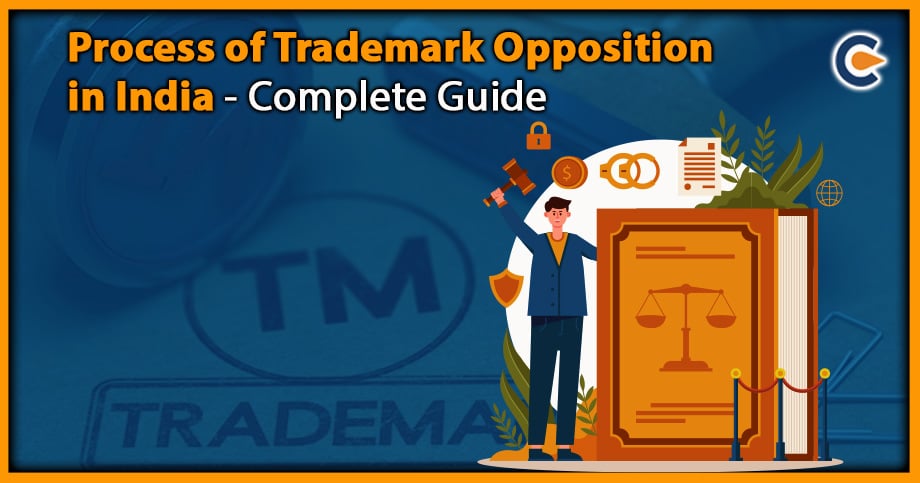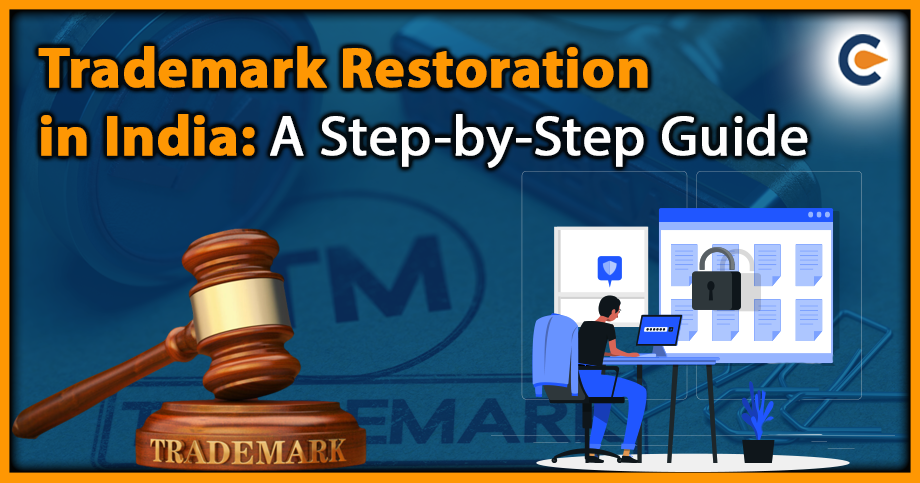Trademark registration is essential for a business or individual who wants to protect their brand name or logo. The Controller General of Patents, Designs, and Trademarks in India oversees the trademark registration procedure. There are several reasons a trademark application could be rejected or denied; not all trademark applications are accepted. Scroll down to check more information regarding Trademark Application Denial.
Overview of the Trademark Registration Process in India
The legal process of trademark registration in India gives the sole authority to use a particular trademark in connection with particular goods or services. The Trademarks Act of 1999 and the Trademark Rules of 2017 promulgated thereunder control it.
To register a trademark, the applicant has to file a trademark application with the Trade Marks Registry. The application will include a representation of the trademark and the list of goods or services for which it will be used. The Trademark Registry then formally examines the application to ensure all formal requirements have been completed. If there are any objections, the applicant is given an opportunity to address them and rectify them.
A substantive examination is conducted on the application following the formal examination to ascertain whether the trademark is distinctive and does not infringe any other already registered trademark. The trademark will be published in the Trademarks Journal for the third parties to object to; if there are no objections or oppositions, the trademark will be registered, and a trademark registration certificate will be given to the applicant.
The registration of the trademark is done for a period of ten years from the date of filing the application for registration. Trademarks and be perpetually renewed. A trademark registration procedure in India can take anywhere between a year and two, depending on various factors, such as complexity of the application and the objections and oppositions raised during the examination process.
Why is Registering Trademarks Important?
In order to protect intellectual property rights and ensure brand recognition and reputation, trademark registration is crucial. When a trademark is registered, the owner is given the exclusive rights to use it in connection with the goods or services covered by the registration. This aids in preventing others from using marks that are similar to or identical, which can lead to a misunderstanding or damage the reputation of the brand.
Trademark registration also offers the owner of the mark protection and legal remedies in the event of infringement or illegal use. When a trademark is registered, it is simpler to pursue legal action against infringement because it serves as proof of ownership and a legal basis for the claim. A registered trademark also increases the worth of a business, attracting investors and potential buyers. It establishes a level of credibility and professionalism and shows that the business has taken action to protect its intellectual property.
Also, trademark registration enables businesses to build their brand by franchising or to license their trademark. This can help in expanding the brand’s reach and recognition while generating extra revenue streams.
Reasons of Trademark Application Denial
Following are some reasons of Trademark Application Denial:
- Trademark Objection
An official objection to a trademark application is known as a trademark objection. The objection is raised by the examiner. It denotes that before the application can be authorized for registration, the examiner has expressed concerns about it and has urged the applicant to clarify or rectify those specific issues. The objections can be based on descriptiveness, its similarity to other registered trademarks or its inability to adhere to the legal standards. The applicant must respond to the objection with a written response within thirty days of the examination report received.
- Trademark Application Denial/Refusal
Rejection of the trademark application by the registrar is referred to as trademark refusal. This can happen for numerous reasons, such as when the trademark lacks uniqueness, is too similar to another mark already in use, is false or misleading, offensive or goes against the law. A trademark denial indicates that it cannot be registered, and as a result, it cannot be legally protected. However, it is possible to appeal a trademark refusal and provide further evidence or arguments to support the registration of the trademark.
- Section 9 of Trade Marks Act, 1999
Section 9 of the Trade Marks Act of 1999 states the absolute grounds of Trademark Application Denial or Refusal. The following are the grounds on which the trademark can be refused:
- A trademark that is not distinctive will be refused.
- The trademarks which give information about the kind, quality, values, quantity, intended use, or geographic origin of goods or services or other characteristics will be refused.
- The marks that compromise indications or signs that have become customary in the language or in established practices of the trade.
- The trademark that causes public confusion and deceives the public is also refused.
- The trademark that may hurt religious sentiments is also refused.
- The trademarks that contain obscene or scandalous matters are not allowed to be registered.
- If the use of the mark is restricted by the Emblems and Names (Prevention of Improper Use) Act, 1950.
- The trademark is made up of marks derived from the characteristics of the goods or services them.
- The trademark includes marks which give products significant value.
- The trademarks are shape marks that significantly increase the value of the goods.
- Section 11 of Trade Marks Act, 1999
Section 11 of the Trade Marks Act of 1999 states the relative grounds of Trademark Application Denial or Refusal. The following are the relative grounds for refusal:
- Section 11(1) :-
- It resembles an earlier trademark in certain ways
- The trademark is similar to a previous trademark, and both are in the same class of goods or services, which can cause public confusion.
- Section 11(2) :-
- Is identical or similar to a well-recognized trademark.
- The trademark has characteristics that could undermine the distinctiveness of a related, well-known trademark.
- Section 11(3):- The marks will be refused to register if the law of passing off and copyright law prohibits the use of the mark.
When and How to File an Appeal?
An essential step in protecting the trademark in India is to file an appeal. Only the person aggrieved, that is the person against whom a decision has been made that wrongfully, denied him anything he had the right to demand, can submit an appeal against the order of the registrar of trademarks. The appeal is to be filed within three months from the date on which the order of the registrar was received. An appeal can also be filed after three months if the appellate board is satisfied with the reasons given by the applicant.
It is critical to act quickly and submit an appeal if your trademark application has been rejected. Section 91 of the Trademarks Act of 1999[1] states about the appeals made to the appellate board. Following are the steps that can be followed when filing an appeal for trademark denial:
- Choose The Proper Authority: Choosing the proper authority to submit an appeal is the first stage in the process. The Intellectual Property Appellate Board (IPAB) is an independent statutory body that handles the appeals from decisions made by the registrar of the trademarks.
- Obtain A Copy Of The Decision: It is essential to receive a copy of the decision that results in the denial of the trademark application before the appeal is submitted. This will enable the applicant to comprehend the grounds for the rejection and assist in building a stronger case for an appeal.
- Prepare The Appeal: The preparation of the appeal is the next stage. This should contain a written statement describing the appeal’s reasons and along with relevant documents or evidence along with the order of the registrar, with affidavits, counter statements, a notice of oppositions and a vakalatnama if present. The required fees should also be paid. In the Trade Marks (Applications, Appeals, and Fees to the Intellectual Property Appellate Board) Regulations, Form 2, the appeal of a trademark registrar’s order pertaining to goods or services falling into one class is addressed. While Form 3 is used to appeal a trademark registrar’s order or decision pertaining to goods or services falling into two or more classes. All the forms and necessary documents are to be submitted in triplicate. The fee for Form 2 is Rs 5000/-.
- Submit The Appeal: The appeal can be submitted to IPAB after it has been prepared. The required fees and any other necessary documents must be submitted with the appeal.
- Show Up To the Hearing: A hearing will be scheduled following the filling of the appeal. It is essential to attend the hearing in person or through a representative.
- Wait for The Decision: The IPAB will decide on the appeal following the hearing. The trademark application will be accepted if the appeal is granted. If the appeal is rejected, the applicant can further appeal again in the High Court.
Conclusion
In India, challenging a trademark application denial can be a complex and sensitive. It is critical to take action right away and give an appeal significant thought before moving forward. By understanding the reasons for the Trademark Application Denial, the time frame for filing an appeal and the appeal procedure itself, the trademark applicant can make an informed decision about how to move forward. It is crucial to follow the correct processes and submit all the necessary documents when filing an appeal so that your case is heard by the appellate body. Registering a trademark in India is a great asset for businesses and individuals that want to protect their intellectual property. You can protect your rights and build your brand in the marketplace by carefully navigating the trademark registration and appeal processes.
Also Read:
Online Trademark Registration: A Detailed Guide
Process Of Trademark Registration: Step By Step Guide
An Overview On Document Required For Trademark Registration











